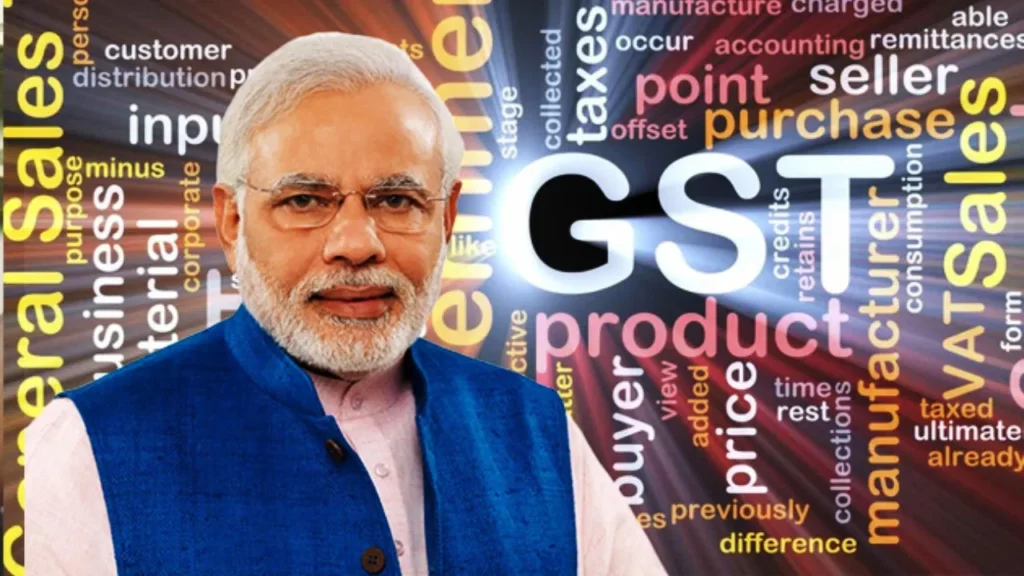Prime Minister Narendra Modi, in his Independence Day address on Friday, announced that next-generation Goods and Services Tax (GST) reforms will be rolled out by Diwali, promising a reduction in taxes on everyday-use items.
“I am going to give a great gift on Diwali. In the last eight years, we undertook a major GST reform to simplify taxation. Now, it is the demand of the time to review and update the system. We have consulted with states and are bringing next-generation GST reforms,” the Prime Minister said.
The announcement follows income tax cuts unveiled in the Union Budget earlier this year and is aimed at boosting disposable incomes for the middle class.
Shortly after the address, the Union Finance Ministry released the government’s blueprint for GST reforms, structured around three key pillars: structural reforms, rate rationalisation, and ease of living.
Since its introduction eight years ago, GST merged central taxes like excise duty with state levies such as VAT, doubling the indirect tax base to 1.52 crore taxpayers. However, rate cuts and the pandemic-induced slowdown have meant that net revenue has only recently returned to pre-GST levels. The system has also faced rising litigation and alleged evasion cases.
To address these challenges, the Finance Ministry, in a proposal submitted to a Group of Ministers (GoM) formed by the GST Council, recommended reducing taxes on essential and aspirational goods. This, it said, would enhance affordability, boost consumption, and make key products more accessible to a wider population.
Notably, the proposal suggests simplifying GST into two main slabs—standard and merit—with special rates only for select items.
The ministry also highlighted that the compensation cess, previously levied on luxury and sin goods to offset state revenue shortfalls, has ended. This development is expected to create fiscal space, allowing for greater flexibility in rationalising GST rates sustainably over the long term.
Structural Reforms and Compliance Simplification
The ministry stressed that correcting the inverted duty structure—aligning input and output tax rates—is critical to reducing the accumulation of input tax credits and supporting domestic value addition.
Classification issues also need resolution to streamline rate structures, minimise disputes, simplify compliance, and ensure consistency across sectors. The reforms are intended to provide stability and predictability, giving long-term clarity on rates and policies to build industry confidence and improve business planning.
To make compliance easier, proposals include seamless, technology-driven registration—especially for small businesses and startups—pre-filled return filing to reduce manual errors, and faster, automated processing of refunds for exporters and those impacted by inverted duty structures.
“The Centre’s proposal, anchored on these three foundational pillars, has been shared with the GoM for further deliberation. The initiative aims to foster constructive, inclusive, and consensus-based dialogue among all stakeholders,” the ministry stated.
Emphasising cooperative federalism, the ministry added that the Centre is committed to working closely with states to build broad-based consensus for implementing next-generation GST reforms envisioned by the Prime Minister. The GST Council, in its next meeting, will review the GoM’s recommendations, with every effort made to implement them early, ensuring benefits are realised within the current financial year.
“The government remains committed to evolving GST into a simple, stable, and transparent tax system—one that promotes inclusive growth, strengthens the formal economy, and enhances ease of doing business nationwide,” the ministry said.
FICCI President Harsha Vardhan Agarwal welcomed the announcement, noting, “A comprehensive GST review after eight years will reduce tax burdens on consumers and businesses and enhance ease of doing business. The focus on compliance reduction, eliminating redundant regulations, and creating a dedicated Reform Task Force will strengthen India’s position as a global manufacturing hub.”
In 2024-25, gross GST collections reached a record ₹22.08 lakh crore, reflecting a year-on-year growth of 9.4%. This rise signals increasing formalisation of the economy and improved tax compliance.
GST, which marked eight years since its rollout on 1 July 2017, replaced a complex web of indirect taxes with a unified system, simplifying compliance, reducing business costs, and enabling free movement of goods across states. By improving transparency and efficiency, GST laid the foundation for a more integrated and robust Indian economy.
